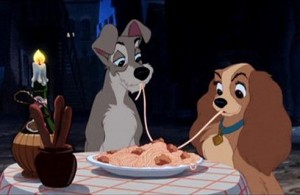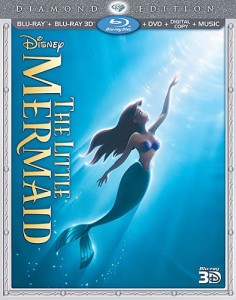Ice Age
Posted on December 13, 2002 at 5:17 am
B+| Lowest Recommended Age: | Kindergarten - 3rd Grade |
| MPAA Rating: | Rated PG for mild peril |
| Profanity: | None |
| Alcohol/ Drugs: | None |
| Violence/ Scariness: | Some peril, off-screen deaths including family members of main characters |
| Diversity Issues: | A theme of the movie |
| Date Released to Theaters: | 2002 |
Ice Age” is a clever, funny, and touching story of an unlikely trio of animals who band together to return a human baby to his family.
The story is set when glaciers covered much of the earth, 20,000 years ago. As all of the other animals migrate south in search of food, three characters are moving in the opposite direction. They are a wooly mammoth named Manny (voice of Ray Romano), a sloth named Sid (John Leguizamo), and a saber tooth tiger named Diego (Denis Leary). In classic road movie fashion, they don’t like or trust each other very much at the beginning and the journey becomes a psychological one as they share experiences and confidences that make them see each other – and themselves – very differently.
This does not reach the level of Shrek for wit, there is no romance to keep the grown-ups happy, and the plot has no surprises. But it is told with terrific energy, imagination, visual invention, and humor and it moves along very quickly. Interestingly, the three lead voices are provided by performers who began as stand-up comics rather than actors. Their voices are edgy and distinctive, perfectly matched with their characters.
The computer animation is truly magnificent, from the majestic ice-covered mountains to the acorn treasure toted around by a hilarious squirrel who shows up over and over again in the travels of our heroes. The texture of the fur and feathers, the glint of the sun on ice, and soft sparkle of the snowflakes falling at night are perfectly rendered. The pristine settings convey a sense of vastness and promise that will make grown-up viewers pause to think about whether civilization has been all that civilized. All ages will enjoy the facial expressions, body language and — I have to say it — performances of the ice age mammals, so vivid and so true that you may forget that they are pixels, not people.
Parents should know that the characters face peril several times throughout the movie, and it may be upsetting for younger children. The mother of a young child is killed (off-screen) saving the child’s life. Another character recalls the death of his family. While it is fairly mild on the “Bambi” scale, the issues of human hunting of animals, animal predators, and extinction are raised. A character makes a skeptical comment about “mating for life.” There is some mild diaper humor.
Families who see this movie should talk about what Manny says about members of a herd being willing to risk their lives for each other. Why was it so important for Manny to return the baby, even though the humans had hunted his herd? How did that help to heal some of Manny’s sadness? Why did Diego change his mind about Manny? Why did Manny change his mind about Sid? Was it because of something Sid did or because of something Manny learned about himself, or both? What is different about the way that Diego and Manny react to human attacks?
Families who enjoy this movie will enjoy learning more about the real Ice Age, and should visit a local natural history museum or look at this virtual tour from the Smithsonian Institution’s museum in Washington. They should take a look at the real cave paintings from that era to see paintings of mammoths and saber tooth tigers by people who really saw them. Families with younger children will also enjoy the “Land Before Time” series of videos and Disney’s “Dinosaur.


